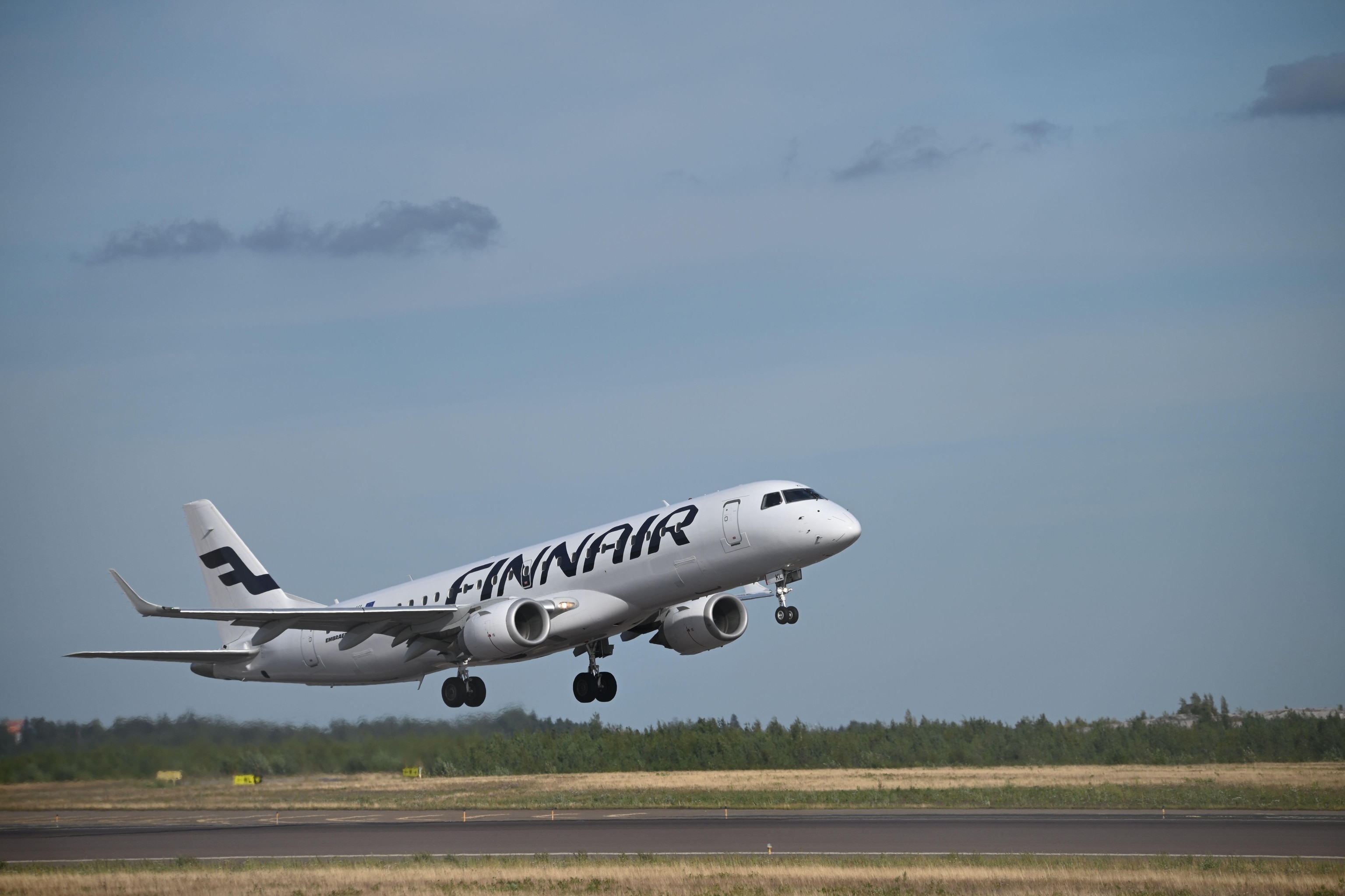
This airline is now weighing passengers — but why?
Finnish airline Finnair is checking the weight of its passengers to ensure its planes are operating safely. Here's what that means for travelers.
Asking passengers to step onto the scales before boarding a flight was always going to be a controversial move. Agitated commentators raged, accusing Finnair, which is Finland’s national carrier, of humiliating passengers and being ‘triggering to people with eating disorders’.
Delve a little deeper, however, and such outrage isn’t entirely justified, with safety, and crucially anonymity, at the heart of the airline’s data collection exercise. An accurate understanding of the weight of an aircraft is vital for aviation safety and, as the make-up of society changes, the charts and tables used by flight crew need updating.
Finnair insists its weigh-in is voluntary, although such assurance may struggle to appease those fearful of a rather public date with the scales.
Why is Finnair weighing passengers?
Central to the whole scheme is each aircraft’s ‘maximum takeoff mass’, the weight at which it can safely leave the ground. This is specified by the manufacturer and must be strictly observed.
But weight is also a major factor in working out how much fuel a plane should carry and in calculating its range and potential emergency landing sites. As airlines don’t weigh every passenger or their hand luggage, a lot of averages are incorporated into those calculations. Over time, these need to be reviewed as society changes, especially given that public health data points towards a general increase in average body weight per person.
What does it entail?
Broadly, airlines have two options when it comes to weight data. They can either use standard-issue data from official bodies — such as the European Union Aviation Safety Agency (EASA) or the UK Civil Aviation Authority (CAA) — or collect it themselves. Finnair has opted for the latter.
The airline will ask a random sample of passengers travelling in April and May to step onto the scales as it seeks to ‘optimise [its] current aircraft balance calculations’.
I don’t want to be weighed. Can I opt out?
Yes, of course. The airline is stressing that participation is entirely voluntary; however, it’s also at pains to tell passengers who do take part that all data is anonymous. Only the agent working at the gate will see the figure and Finnair won’t link the recorded weight to the customer’s name or booking reference.
The data will then be sent to the Finnish Transport and Communications Agency for approval. It will be used in calculations until 2030.
Satu Munnukka, head of ground processes at Finnair, said: “We record the total weight and background information of the customer plus their carry-on baggage, but we don’t ask for their name or booking number, for example.
“Only the customer service agent working at the measuring point can see the total weight, so you can participate in the study with peace of mind.
“We hope to have a good sample of volunteers, both business and leisure travellers, so that we can get the most accurate information possible for important balance calculations.”
Is the data regularly updated?
Yes, Finnair updates its data about every five years, while EASA last contracted Lufthansa Consulting to research passenger and luggage weight in 2021. Over 10 months, the aviation and management consulting company weighed 4,164 passengers at six European airports and analysed 1,998,070 pieces of checked luggage.
Lufthansa Consulting reported the average weight of male passengers as 82.5kg and 67.5kg for female passengers, adding that there was ‘no significant weight gain or loss observed for passengers in general’ since the previous survey in 2009.
Overall, it concluded that the mean value of all passengers is 76.3kg, while the average carry-on weight is 7.7kg. This resulted in a mean passenger weight for adults plus their carry-on luggage as 84kg — in line with the existing regulation. The research will be repeated in five years’ time.
Have other airlines weighed passengers?
Yes, several other carriers, including Korean Air and Air New Zealand, have previously carried out similar large-scale surveys. Last year, 10,000 passengers travelling internationally from Auckland were weighed, while in 2015, Uzbekistan Airways said it would have all passengers stand on the scales before boarding ‘to ensure safety’. Some smaller airlines that operate turboprop planes also ask passengers to be weighed before boarding, while it's common practice for helicopter companies.
Haven’t we been here before?
Yes. Airlines and aircraft manufacturers have always been acutely aware that every pound, and ounce, counts when it comes to flying.
On its inaugural San Francisco to New York flight in 1933, Boeing Air Transport ensured its 247D aircraft — carrying 10 passengers and one flight attendant — was no heavier than 16,805 pounds (7,623kg) at takeoff. This required weighing everything, including the passengers.
The practice continued until the mid-1950s, when the US government first published standard tables that airlines could use to calculate the weight and balance of an aircraft — to the relief of many passengers.
Is weighing passengers about to become a regular thing then?
So far, there’s certainly no indication that airlines may re-introduce weighing at check-in again. All airline weighing programmes have so far been temporary data collection projects and none has introduced it as a permanent practice.
To subscribe to National Geographic Traveller (UK) magazine click here. (Available in select countries only).





